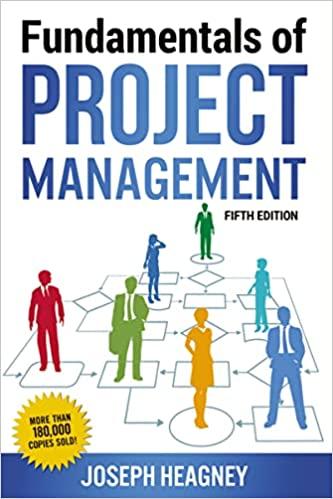Question
Note: You may use the Excel template provided on Blackboard any calculations needed for analyzing this case Ellen Lin, vice president of supply chain at
Note: You may use the Excel template provided on Blackboard any calculations needed for analyzing this case
Ellen Lin, vice president of supply chain at Michaels Hardware, was looking at the financial results from the past quarter and thought that the company could significantly improve its distribution costs, especially given the recent expansion into Arizona. Transportation costs had been very high, and Ellen believed that moving away from LTL shipping to Arizona would help lower transportation costs without significantly raising inventories.
Michaels had 32 stores each in Illinois and Arizona and sourced its products from eight suppliers located in the Midwest. The company began in Illinois and its stores in the state enjoyed strong sales. Each Illinois store sold, on average, 50,000 units a year of product from each supplier (for annual sales of 400,000 units per store). The Arizona operation was started about five years ago and still had plenty of room to grow. Each Arizona store sold 10,000 units a year from each supplier (for annual sales of 80,000 units per store).
Given the large sales at its Illinois stores, Michaels followed a direct-ship model and shipped small truckloads (with a capacity of 10,000 units) from each supplier to each of its Illinois stores. Each small truck costs $450 per delivery from a supplier to an Illinois store and could carry up to 10,000 units. In Arizona, however, the company wanted to keep inventories low and used LTL shipping that required a minimum shipment of only 500 units per store but cost $0.50 per unit. Holding costs for Michaels were $1 per unit per year.
Ellen asked her staff to propose different distribution alternatives for both Illinois and Arizona.
Ellens staff proposed two alternative distribution strategies for the stores in Illinois:
Use direct shipping with even larger trucks that had a capacity of 40,000 units. These trucks charged only $1,150 per delivery to an Illinois store. Using larger trucks would lower transportation costs but increase inventories because of the larger batch sizes.
- Run milk runs from each supplier to multiple stores in Illinois to lower inventory cost even if the cost of transportation increased. Large trucks (capacity of 40,000 units) would charge $1,000 per shipment and a charge of $150 per delivery. Small trucks (capacity of 10,000 units) would charge $400 per shipment and a charge of $50 per delivery.
Ellens staff had three distribution alternatives for the stores in Arizona:
Use direct shipping with small trucks (capacity of 10,000 units) as was currently being done in Illinois. Each small truck charged $2,050 for a shipment of up to 10,000 units from a supplier to a store in Arizona. This was a significantly lower transportation cost than was currently being charged by the LTL carrier. This alternative, how-ever, would increase inventory costs in Arizona given the larger batch sizes.
Run milk runs using small trucks (capacity of 10,000 units) from each supplier to multiple stores in Ari-zona. The small truck carrier charged $2,000 per shipment and $50 per delivery. Thus, a milk run from a supplier to four stores would cost $2,200. Milk runs would incur higher transportation costs than direct shipping but would keep inventory costs lower.
- Use a third-party cross-docking facility in Arizona that charged $0.10 per unit for this cross-docking service. This would allow all suppliers to ship product (destined for all 32 Arizona stores) using a large truck to the cross-dock facility, where it would be cross-docked and sent to stores in smaller trucks (each smaller truck would now contain product from all eight suppliers). Large trucks (capacity of 40,000 units) charge $4,150 from each supplier to the cross-dock facility. Small trucks (capacity of 10,000 units) charge $250 from the cross-dock facility to each retail store in Arizona.
Ellen wondered how best to structure the distribution network and whether the savings would be worth the effort. If she used milk runs in either region, she also had to decide on how many stores to include in each milk run.
Questions:
-What is the annual distribution cost of the current distribution network? Include transportation and inventory costs.
-How should Ellen structure distribution from suppliers to the stores in Illinois? What annual savings can she expect?
-How should Ellen structure distribution from suppliers to the stores in Arizona? What annual savings can she expect?
-What changes in the distribution network (if any) would you suggest as both markets grow?
Step by Step Solution
There are 3 Steps involved in it
Step: 1

Get Instant Access to Expert-Tailored Solutions
See step-by-step solutions with expert insights and AI powered tools for academic success
Step: 2

Step: 3

Ace Your Homework with AI
Get the answers you need in no time with our AI-driven, step-by-step assistance
Get Started


